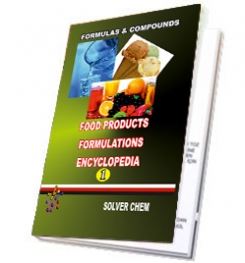
The term aromatic derives from the Latin word “aroma”, meaning fragrance.
Until into the 19th century, substances were described as aromatics that were principally obtainable from resins or plants and that gave off a pleasant smell.
More accurate scientific tests showed many of these substances to be benzene derivatives. After the concept of aromaticity had been extended in the middle of the 19th century to include first all benzene derivatives, Emil Erlenmeyer suggested using the word “aromatic” for all compounds having similar properties to benzene. The decisive criterion for him was that the compound should tend more towards substitution reactions than towards addition ones.

In 1931 the scientist Erich Hückel achieved a breakthrough in defining the aromaticity of a substance. Named after him, “Hückel’s rule” enables aromatic and anti-aromatic compounds to be distinguished on the basis of the number of π-electrons.
Besides classification, the structure of aromatics – particularly that of benzene – also represents a challenge for the scientific world.
The crucial breakthrough here was achieved by Friedrich August Kekulé of Stradonitz in 1865. He introduced a ring-like structure of benzene, the carbon atoms being interchangingly linked together via simple and double bonds.
Based on the structure developed by Kekulé, Robinson in 1925 proposed the ring symbol for benzene: The π-electrons being delocalised, the benzene molecule is represented as lying between two bordering structures. This delocalisation of bonds at the same time determines the characteristic stability of the benzene molecule - which also distinguishes the other aromatics.
RELATED TAGS : What is aromatics in foods, aromatics in food properties, how to use aromatic in food, where to use food aromatics, food ingredients, food chemicals, food materials, how much use food ingredients, food categories, food flavoring, food colorings. where to use acid regulators, why to use food aromatics, properties of aromatics in food products, usage of aromatics, formulations of food products.

FOOD PRODUCTS FORMULATIONS ENCYCLOPEDIA contains formulations and production process of following products that are natural ice cream formulations, fruit flavored ice cream preparation,composition of diet ice cream making, ice cream coatings compounds, natural ice lollies, instant fruit juice powder manufacturing process, fruit juice concentrations, fruit nectar making, formulations of flavored fruit juices, fruit flavored soda, diet and light fruit soda, chewing gum formulations, sugar free diet chewing gum production process, chewing gum flavored coating preparation, halvah and turkish delights compositions, sugar candy compounds,sugar hard candy types, nuts coatings, almonds coatings preparations, meat bouillions formulas, chicken bouillions manufacturing process, vegetable bouillons compositions, fish bouillon making, meat sausage preparation, chicken sausages, meat burger making, chicken burger preparations and etc.
|
|
|
|
|
|
|
|
|
